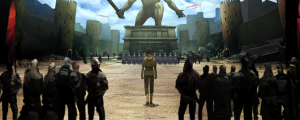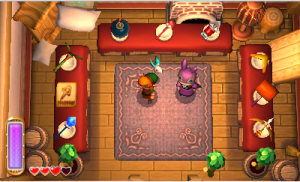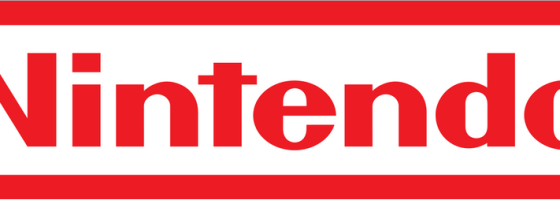Over the holiday break I decided to buy my first Pokémon game in about 15 years due to everyone suggesting that this was the Pokémon game to get. But after playing it for a few hours, I found my interest fading fast which was a surprise considering my love of the similarly designed Shin Megami Tensei series.
Thinking about it more, I came to the realization that the issues that I have with Pokémon mirror what I feel has become one of Nintendo’s biggest problems in recent years.
A Reverse Age Barrier:
Pokémon’s basic game mechanics have not changed since the series debuted in the mid 90s. As time went on, the design grew with more Pokémon, the ability to breed them and so on. More importantly the series is one of the few Nintendo brands that appeals to both younger and older gamers.
The younger audience likes the variety of Pokémon and the easy to learn gameplay. While older gamers like the ability to battle their friends and try to put together an awesome team of Pokémon.
But despite the wide fan base, Pokémon is still primarily a series aimed at a younger audience. The basic plot remains almost note for note the same from the original: A professor wants you to collect Pokémon, evil group wanting to take over, gym leaders to fight and etc.
Despite the depth of putting together a winning team and the variety of skills available, the UI design was very poor. You had to go through multiple screens to find information on your Pokémon, no mention of strengths/weaknesses, the UI also seemed slow as well.
For someone wanting to take the next step towards mastery, the game does not make any allowances and instead leaves itself for the younger fan-base. There is no real challenge during the main story, gym leaders don’t have any tricks other than focusing on a specific type of Pokémon. And from what I’ve heard, the game doesn’t get truly challenging until you reach the post game content of going after the rarer Pokémon.
Now you may take this as me not being a fan of Pokémon’s gameplay, however one of my favorite series has been the Shin Megami Tensei games which as I mentioned at the start, are almost a mirror in terms of basic mechanics.
You’re still recruiting party members through combat, managing their growth while putting together a team to win with. But the latest game, SMT 4 was far more accessible than Pokémon was, despite it being aimed at an older audience. I can see directly from the battle screen what attacks would work best given the situation and which ones to avoid.

Despite being aimed for an older audience, SMT 4 was more accessible in its design and UI than Pokemon was.
Unlike Pokémon, the menus were designed for quick read and use.
Even the act of switching characters to and from my party was handled easily. Besides that, the game was challenging with a variety of bosses that each required different tactics.
But here’s the important part, despite being aimed at more skilled gamers, Atlus saw fit to make accommodations in the design for lesser skilled fans so that they could still enjoy the game without it getting in the way of expert fans. This came in the options to save anywhere, multiple difficulty levels and being able to revive after dying either by using in game currency or 3DS play coins.
Thinking about it more, Pokémon is the perfect reflection in regards to Nintendo’s issues with attracting older or higher skilled gamers. Normally an age barrier means that someone can’t do something because they are too young, but with Nintendo, most of their games are meant for a younger audience and not for older gamers.
Most Nintendo titles are not challenging at all and the game difficulties are skewed towards a younger crowd in the form of easy level design, constant tutorials and making sure that the player is never unsure of what they should be doing.
Any form of challenge of difficulty is usually reserved for post game or optional content such as the extra worlds in a Mario game. However, to get to that level of difficulty requires someone to play through the rest of the game first, just like in Pokémon.

The recent Zelda game was a great example of being designed for older audiences first, while providing optional systems for younger or lesser skilled gamers.
Even Nintendo’s online options are permeated by their focus on younger gamers.
We’ve talked about how annoying their “friend code” system is in the past and how the purpose was originally about protecting kids from pedophiles as opposed to designing a capable system for everyone.
And recently there was the reveal that no one at Nintendo had any idea of the architecture or design behind Xbox live or PSN.
Now I’m willing to bet that most of you know what I’m going to say is the solution for Nintendo and that is that they need to grow up. However, where I’m going with that statement may be a surprise.
Maturity Minus Mature:
Nintendo has always made great games, but as of lately there has been a real push to only cater to younger audiences while leaving the older gamers out in the cold.
In order to bring back those older gamers, Nintendo needs to stop assuming that the only people who play their games are below the age of 12. And before some of you start writing some angry comments below, that doesn’t mean that I want to see an M rated Mario game.
Instead, I want to see a reverse of Nintendo’s design philosophy: Instead of aiming for a younger audience and having small accommodations for older gamers, aim for an older audience with challenging design and have accommodations for younger gamers.
The best example of this phenomenon actually comes from the cartoon industry. Some of the best animated series in the last two decades: Batman, Avatar The Last Airbender, My Little Pony, etc all share one thing in common — They were designed for kids but have content skewed towards older audiences.
For example, in the stories that are being told, the writing or even the animation style. These animated series attracted both young and older fans by not being dumb down for younger audiences or being gratuitous to attract older audiences.
Taking this back to the Game Industry, Nintendo has actually experimented with this on the 3DS while making two of my favorite games for it.
First being Kid Icarus Uprising which was designed with an adjustable difficulty slider from the start. This rewarded players who made the game harder with better gear while allowing someone to play through the game to just enjoy the story.
Second was Legend of Zelda: A Link Between Worlds which was one of my favorite games of 2013. The game featured classic Zelda gameplay and had very little hand holding. After the introduction, the player was pretty much left alone to their own devices: No cut-scenes, reminders or puzzle solutions from the start.
This was for the first time in awhile, a challenging Zelda game that didn’t assume you were a kid. But if you did get stuck, there was an optional hint system the player could use as opposed to leaving the optional content for the older audience.
I want to see games from Nintendo that are actually challenging and not built around a unique system and not go anywhere with it. Nintendo has some of the most talented designers in the industry working for them and a catalog of amazing franchises. I would love to see them “cut loose” and design a game without having to design it first and foremost for younger gamers.
Or at the very least, develop games that offer both young and old fans content for them at the start. Such as Super Mario Galaxy’s level design that had a variety of shortcuts for people who were experts at the game to use. Eventually through play, those optional mechanics would become required as the challenge of the game grew.

Kid Icarus was smartly designed and allowed both expert and lesser skilled gamers to progress at their own pace.
My very first game that I played back in 1988 was Super Mario Brothers and while I grew as a gamer, Nintendo seems to have gone in the opposite direction.
I’m tired of playing a Nintendo game that is an on rails experience with a mandatory tutorial and hint system with pretty much the same story in every franchise. And more importantly, I’m tired of Nintendo treating its fan base as only the 6 to 13 crowd.
We’ve talked about Nintendo’s situation on the podcast a few times and the fact remains that at this point, Nintendo will not have the #1 console on the market no matter what they do. The other consoles simply beat them both in terms of power and catalog offerings. For Nintendo to turn things around they need to aim at being the #2 choice for the console market.
And to do that, they need to convince gamers that the Wii U (or whatever else they’re working on) can be played by fans of all ages and that doesn’t mean games for younger audiences. The 3DS has been able to turn it around after a less than amazing launch thanks to a wide variety of games, both from Nintendo and from third parties.
And the first party games from Nintendo on the 3DS do tend to skew to more advanced gamers such as Kid Icarus and Zelda. If they can do more of that, but making use of the Wii-U’s functionality, they may be able to turn it around yet. Whether or not that can still happen this generation or the next however, remains to be seen.


